

Karner Gábor & Fanni, Mátra, Hungary
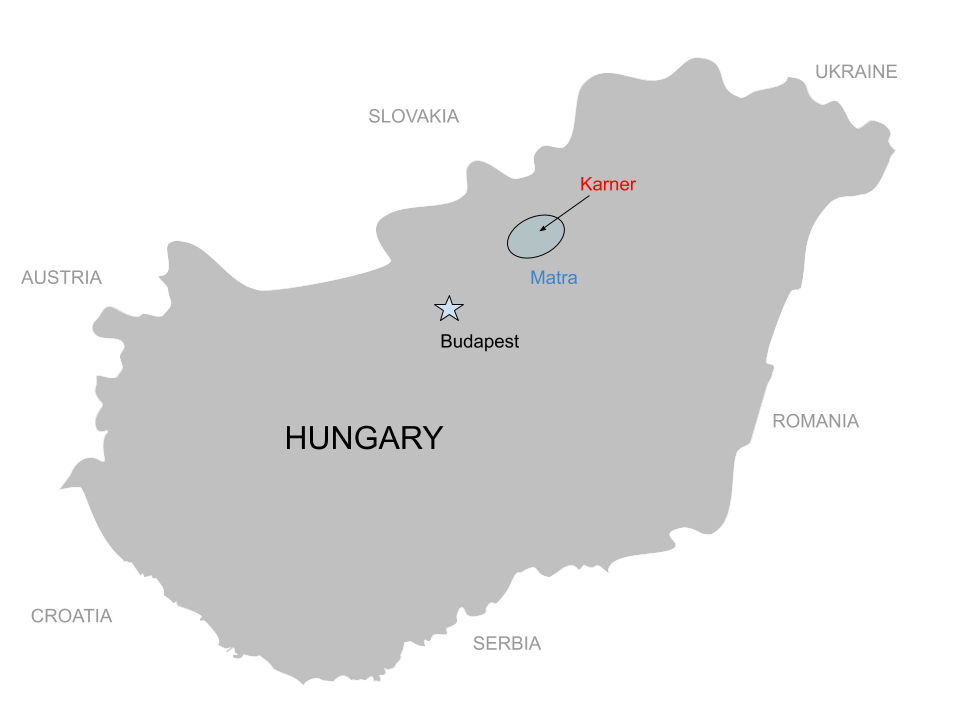
At a Glance
2000
https://www.facebook.com/karner.bor
Mátra
Continental
Andesite, red clay, and chalk
170-200m
Volcanic hills
Olaszrizling, Kékfrankos
5.5 hectares
Organic
Natural
https://www.facebook.com/karner.bor
Mátra
Continental
Andesite, red clay, and chalk
170-200m
Volcanic hills
Olaszrizling, Kékfrankos
5.5 hectares
Organic
Natural
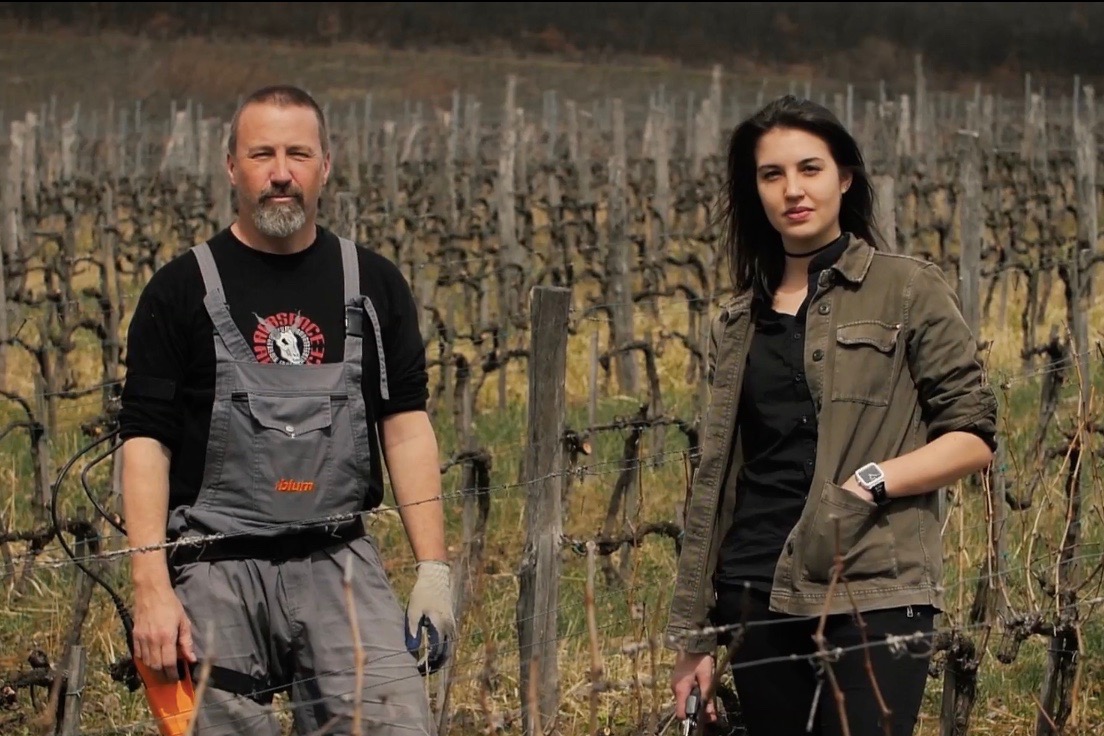
Father and daughter Gábor and Fanni Karner in the vineyard
The Appellation
The Mátra appellation is something we often zoomed past without much thought on our way to Eger and Tokaj in the Northeastern part of Hungary. Perhaps it was because the freeway largely bypasses the towns or because many of the supermarket wines seemed to come from these hills. Below the country’s highest mountain of Kékestető, this is the second largest wine region with 7574 hectares. In recent times, it has largely been dominated by just a few larger industrial players leftover from the Communist COOP years. Think wide row spacing for Soviet tractors, high yielding low quality grapes and industrial farming. For a small group of winemakers, the pendulum is swinging the other way. At the same time, this region has plenty of history that predates Communism.
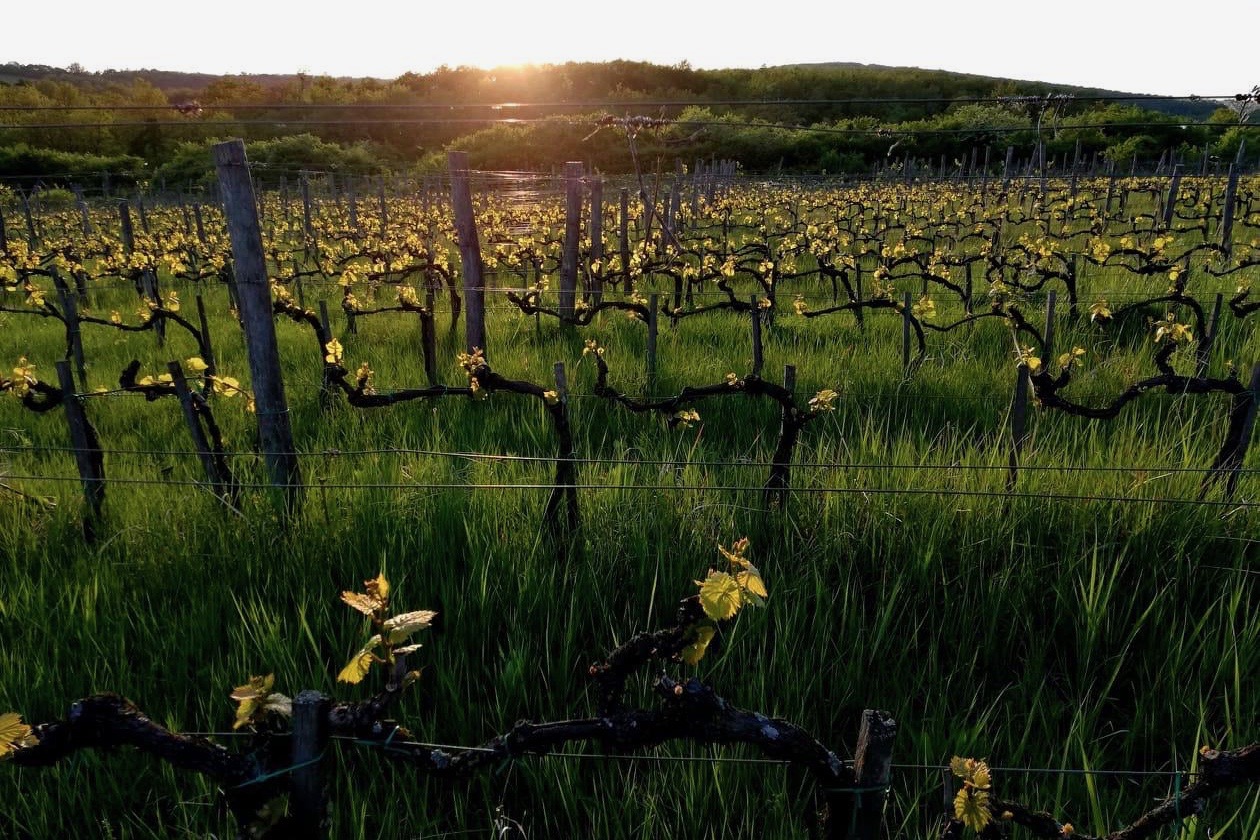
Spring in the vineyard
Vineyards began with the Celts as early as 1042, and the village of Gyöngyös has written records from 1334 licensing a freedom to produce commercially. By the 15th Century these wines were trading well and being heavily taxed during the Turkish occupation. During Rákóczi's War of Independence against the Habsburgs in the early 1700s (spoiler alert, they lost) the wineries of Mátra were punished with Serfdom. Then came Phylloxera, the World Wars, and the aforementioned Communist COOP era.

Spring in the vineyard
Vineyards began with the Celts as early as 1042, and the village of Gyöngyös has written records from 1334 licensing a freedom to produce commercially. By the 15th Century these wines were trading well and being heavily taxed during the Turkish occupation. During Rákóczi's War of Independence against the Habsburgs in the early 1700s (spoiler alert, they lost) the wineries of Mátra were punished with Serfdom. Then came Phylloxera, the World Wars, and the aforementioned Communist COOP era.
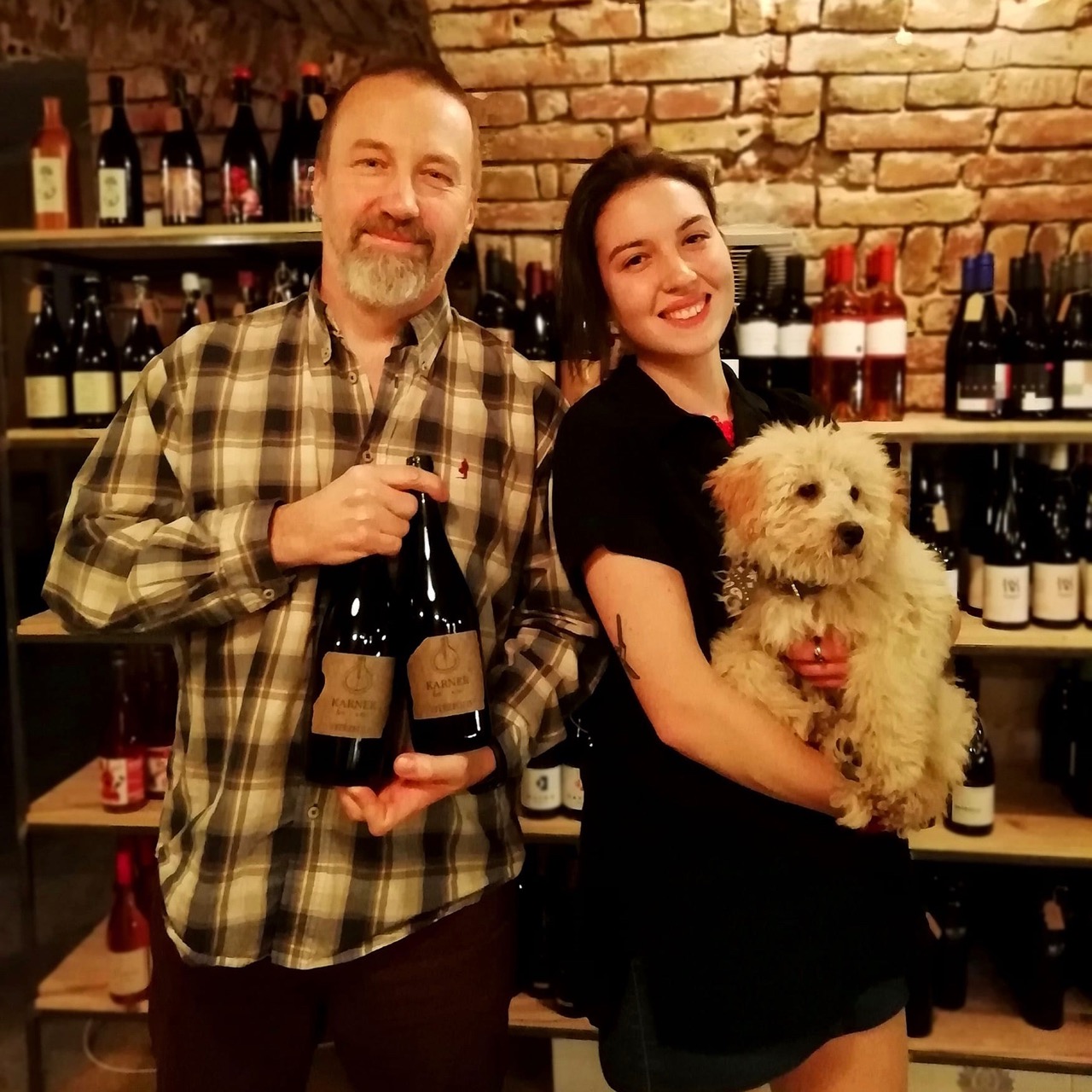
Gábor and Fanni Karner
The People
That brings us to today. What made this area attractive for industrial farming also makes it attractive for organic and regenerative farming. There is low disease pressure, volcanic soils, and protection from extreme weather. Founded in 2000, Gábor Karner now has 5.5 hectares and along with his daughter Fanni, run the estate in the nearby village of Szűcsi. Gábor is also a founding member of Tőkések Mátra (Handcraft Winemaking Circle of Mátra) along with Bálint Losonci and Tamás Szecskő who live a few miles down the road in Gyöngyöspata. They devoted themselves to organic farming, low yields, spontaneous fermentations and no additions other than SO2. As of the 2017 vintage, Gábor and Fanni do not add any additives of any kind. Along with the rhythm of growing and making wine, he’s also a long time drummer most notably of the band rock Æbsence. Drumming makes him happy. When you taste with him he’s constantly tapping the table and moving his feet. It’s also clear that having his daughter choose to work with him brings him even more happiness.
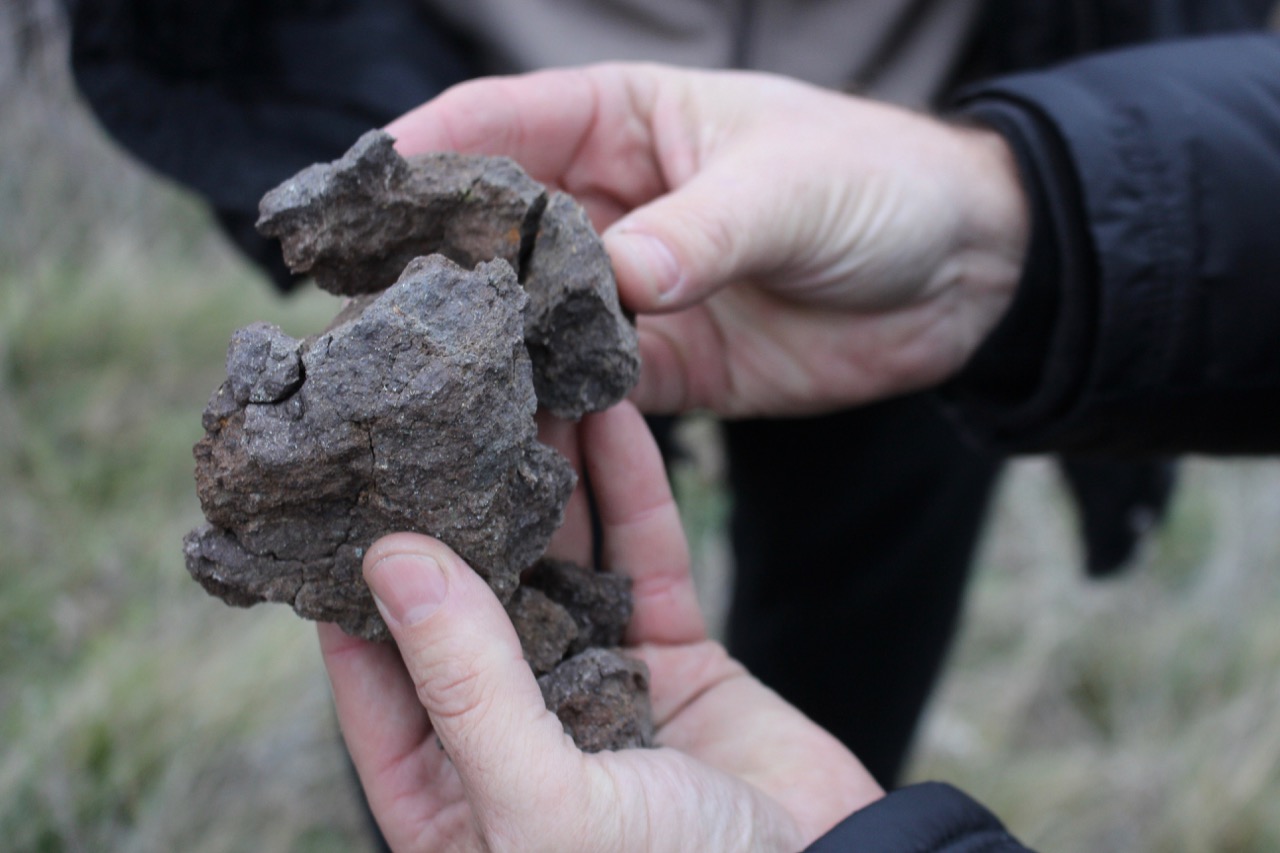
Andesite rocks
Vineyards
Karner's vineyards are located near the village of aforementioned village of Szűcsi. There are over 100 cellars built into the hillside in the Szücsi “Pincafalu” (cellar village), but maybe a dozen or so are still in use and mostly as hobby winemaking. The soils are a mixture of andesite, rhyolite tuff, hummus rich black loam and clay. Mount Kékestető blocks the cold winds from the north, there’s direct exposure to the south, and there’s great airflow year round. There are no absorbable chemicals, rarely tills, and sprays organic treatments 1-2 times per year at most. Sometimes there are zero sprays for the growing season. Most rainfall for the year comes in early summer and then it’s typically dry until harvest. He crops things back to around .5 kilo per vine.
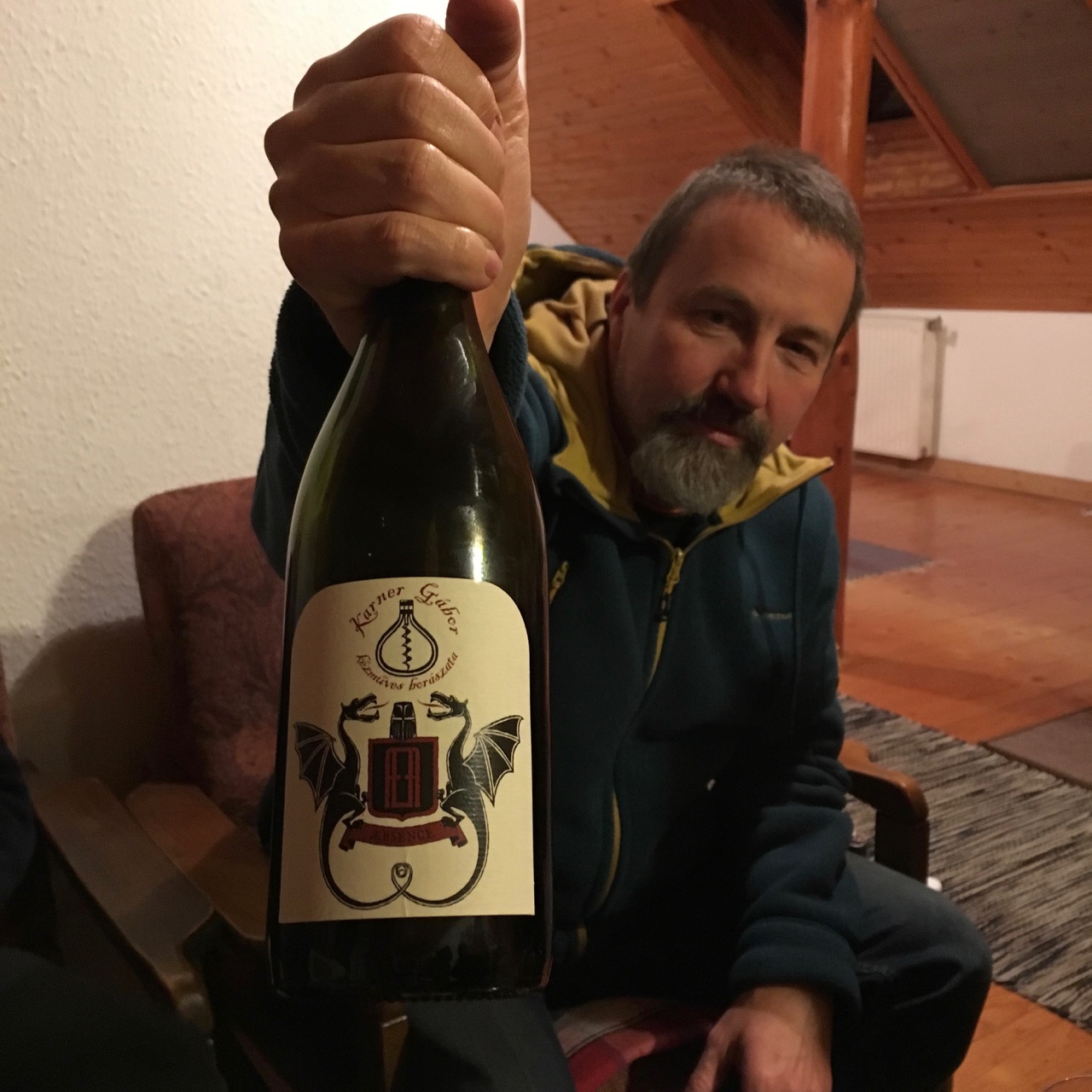
Gábor Karner at our first meeting

Red Wine , Organic
Kékfrankos;
15.7%
2.1 g/l
5.9 g/l
Kékfrankos;
15.7%
2.1 g/l
5.9 g/l
The vineyard name translates to “The good soldier’s land.” Gábor learned that the best plantings were located here pre Phylloxera. During a winter visit we ate frosted rose hips and felt the sun hitting us before the rest of the village below with Mount Kékestető in the background. On our most recent Spring visit, we sat on top of Kecskekő, the mountain in between Gyöngyöspata and Szücsi and a Soviet communications bunker underneath. The Vitézföld is super exposed and prominent on the horizon. A special place. Hand harvested, 2 weeks on the skins, and fermented in a polypropylene (high-temperature resistance, non leaching) breathable tank. Reductive on many earlier visits, but after aging in oak barrels for many years it’s recently been bottled. Unfined, unfiltered, and no additions of any kind. This is dark, layered, high acid and perhaps the most structured and tannic Kékfrankos in the portfolio.

Red Wine , Organic
Kékfrankos;
12.8%
0.8 g/l
7.1 g/l
Kékfrankos;
12.8%
0.8 g/l
7.1 g/l
When we began working together, the only two Kékfrankos Fanni and Gábor produced were the single vineyard Tavasz and Vitézföld. These need age, are intensely structured, and as amazing as they are, are both limited in quantity and deservedly expensive. The non vintage Otthon is what we have to best introduce them. Otthon, literally meaning “home,” is a field blend of Kékfrankos across a number of vintages.. Fanni admits that at first they were trying to create an easier kind of glou-glou wine, but given their farming, the site, the grape and their cellar, it was all but impossible. They didn’t want to pick earlier at the expense of ripeness, they didn’t want to macerate less than it needed to, and it needed more lees contact for stability. So after 2 weeks on the skins, 50% aged in barrel, 50% aged in polypropylene tank, it was bottled unfiltered with zero additions. We started with Otthon #1 which was pulling from extreme drought years and recently converted to organics. They were tough low nitrogen years. This #3 is post drought (mostly 2022 fruit) and with much healthier levels of nitrogen which helps with volatility in particular. It’s bright, can take a chill, but hasn’t lost its teeth at all.
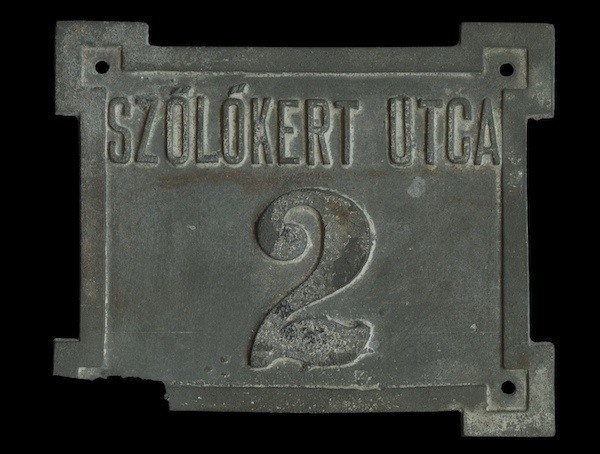
White Wine , Organic
Olaszrizling;
13.1%
1.2 g/l
6.8 g/l
Olaszrizling;
13.1%
1.2 g/l
6.8 g/l
This wine has been denied export paperwork longer than any other wine in the portfolio. When we tried to get Szőlőkert #1, Fanni wasn’t married nor did she have a daughter. With #3 finally in the warehouse, she has both. Perhaps it’s fitting since her daughter’s middle name is Borostyán, which translates to “amber.” And that’s exactly what this is, the amber side of Olaszrizling. Grown in the volcanic andesite and limestone rich Vitézföld vineyard, it’s also planted to a special clone of Olaszrizling that Gábor sourced from Pál Kozma at the research institute in Pécs. Olaszrizling is one of the most (over) planted varieties in Hungary, but this clone has small-berried clusters and something special going on. It’s also non vintage. The 2018 fruit was macerated for two months and aged in barrel. It was blended with purely direct pressed and fermented in tank 2019. Punched down by hand, zero pumps, and moved and bottled with zero additions only with gravity. It’s got plenty of structure, 14+ alcohol and even a few grams of RS, but the balance and freshness is extraordinary.
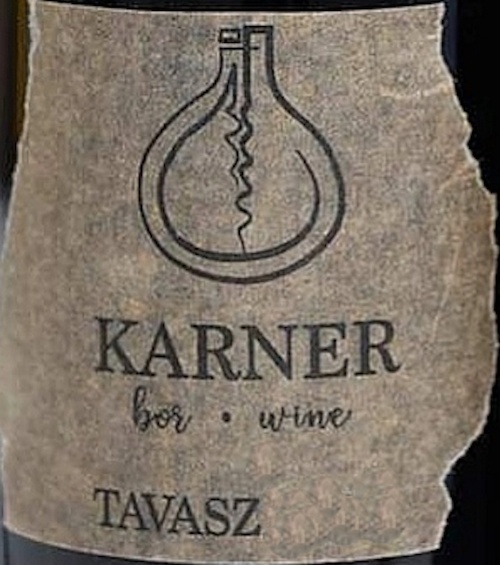
Red Wine , Organic
Kékfrankos;
13.5%
0.9 g/l
6.2 g/l
Kékfrankos;
13.5%
0.9 g/l
6.2 g/l
In the same way I’m hoping to avoid generic “orange” wine, the same goes for zero zero reds. Gábor has been making natural wine for over 20 years (organic farming and only adding SO2) but it wasn’t until the 2017 vintage that he decided to omit SO2 as well. Heavily influenced by winemakers like Zsolt Sütó of Strekov 1075 and Oszkár Maurer, he realized that it was the next step he and Fanni wanted to take. According to Gábor, “Sulfur kills the tiny happiness fairies who live inside the wine.” For Fanni, the wines began to remind her of “forest spring water.” The vines of Tavasz are over 60 years old, west facing, and planted in clay heavy forest soils. The 2017 spent 2 weeks on the skins then 1.5 years in 500L Hungarian Oak. Bottled unfined and unfiltered by gravity with zero additions, they also omit pumps and stainless steel. This is not a wine chasing trend, but the result of decades of conviction.
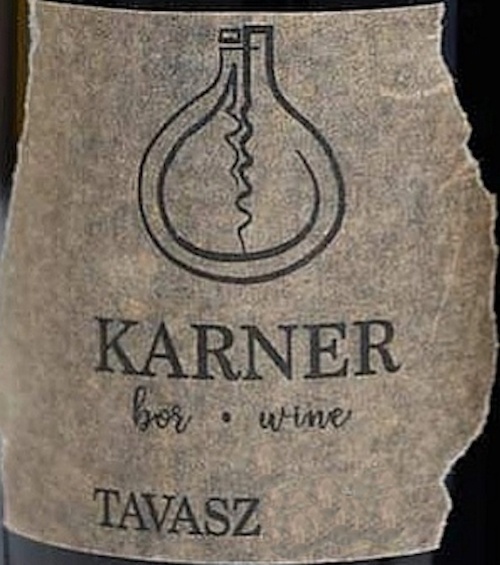
Red Wine , Organic
Kékfrankos;
13.5%
0.9 g/l
6.6 g/l
Kékfrankos;
13.5%
0.9 g/l
6.6 g/l
According to the Karners, wines from the Vitézföld are horizontal on the palate. More fruit, younger vines, red iron rich soil and powerfully refreshing. Tavasz on the other hand goes vertical. High acidity, much older vines (60 years+), deep brown clay, and champions structure. Heavily influenced by winemakers like Zsolt Sütó of Strekov 1075 and Oszkár Maurer, this marks the third vintage making zero compromises in the cellar. According to Gábor, “Sulfur kills the tiny happiness fairies who live inside the wine.” For Fanni, the wines began to remind her of “forest spring water.” The winemaking is straightforward. 2 weeks on the skins in open vats then 1.5 years in 500L Hungarian acacia on the full lees. Bottled unfined and unfiltered by gravity with zero additions, they also omit pumps and stainless steel. An extreme balance of ripeness, texture and freshness.